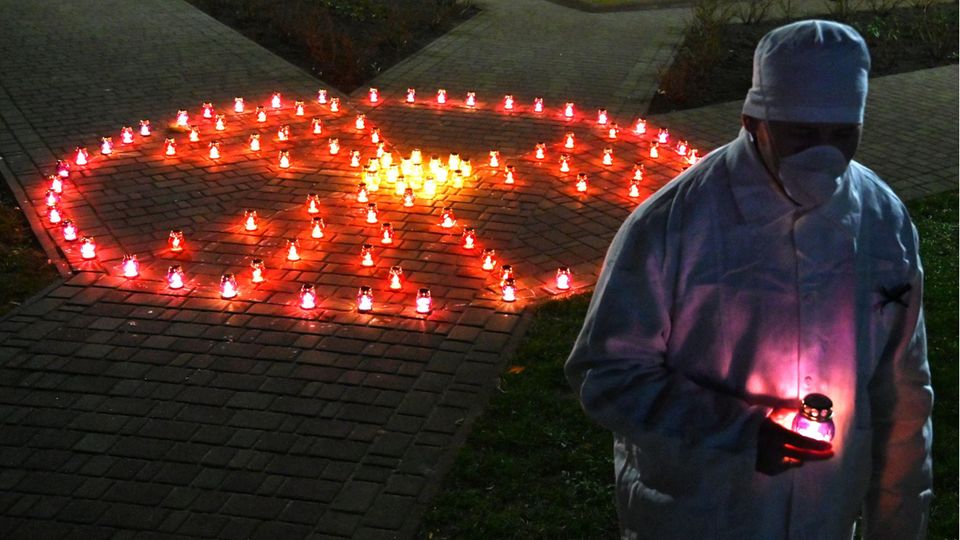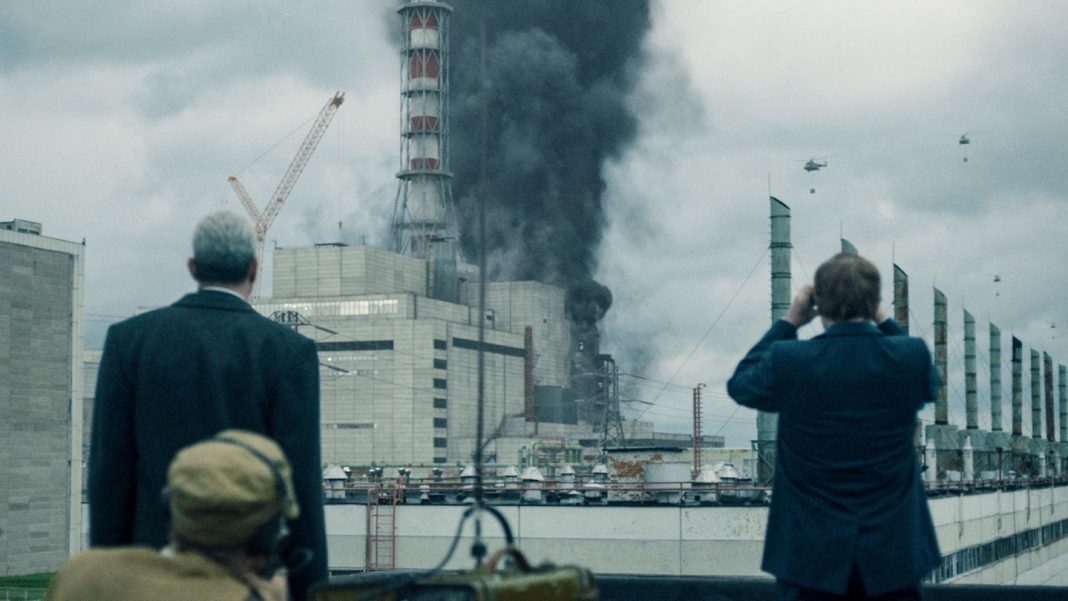Radio activity doubled
Chernobyl disaster reactor: researchers fear ” uncontrolled emission of nuclear energy”

Slavutych, Ukraine: Commemoration of Chernobyl. The nuclear reactor exploded 35 years ago. Thousands of people were exposed. Many lost their homes. The area is still polluted today.
The accident reactor at Chernobyl is not resting: according to scientists, the radioactivity in the rubble is increasing again-with uncertain consequences. The cause could be the new, gigantic protective cover.
The experts had long feared that the Chernobyl nuclear disaster was far from over – and new measurements seem to confirm them. Because the nuclear fission in the nuclear power plant ruins of Chernobyl is increasing again. Sensors would record an increasing number of neutrons in an inaccessible space, according to a report by the Institute for Reactor Safety (ISPNPP) in Kiev. Neutrons are parts of the atomic nucleus with which nuclear fission can be initiated. Although the increase is small, it is a sign of nuclear decay. The Ukrainian researchers are now trying to find out how dangerous the nuclear fission will become.
At the end of April, Block 4 of the nuclear power plant in the north of Ukraine exploded for the 35th time. Together with the disaster in Fukushima, the disaster in the former Soviet Union is considered the most serious nuclear accident in history. Between 90,000 and 150,000 people have died directly or as a result of nuclear contamination. The area around the reactor, which was destroyed in a failed test, has since been reopened to tourists, but remains uninhabitable for centuries. Since 2017, a gigantic protective cover closes the sarcophagus above the ruin, which has been erected several times.
There are currently many uncertainties about the condition inside the damaged block, the science magazine “Science” quotes ISPNPP researcher Maxim Saveliev. He does not want to rule out even a” new accident”. Presumably, however, those responsible would still have a few years to master the threat. Saveliev points out that the findings are likely to be interesting for Japan as well, as Fukushima will eventually face the “same danger.”
Everything melted into a lump called Corium
What exactly happens amidst the debris? During the meltdown on April 26, 1986, the so-called corium was formed by the heat, the decay processes and the materials. In the case of Chernobyl, these are lava-like ceramics, slags and metals that have eaten through the building structure in interaction with the concrete. Very simply put. In this mass, which partially dissolves due to the weather and self-decay, 95 percent of the original reactor fuel is still bound: around 170 tons of uranium.
The element in the corium continues to produce strong radiation. This in turn destroys the ceramic structure and releases more radioactivity. In the first decades after the accident, the hastily constructed ceiling of the sarcophagus regularly forced rainwater into the destroyed reactor room, which at least slowed down the neutron emission and thus the chain reaction. But since the new protective cover completely shields the ruin, this kind of moderator is missing with the rain. Although a neutron-absorbing salt solution is sprayed inside, it does not penetrate all areas of the building.
Radioactivity has doubled
Since the protective cover was completed about four years ago, the dangerous radiation in some of the rooms has almost doubled, according to the Ukrainian scientists. Despite numerous modelling calculations, it is still unclear what exactly is going on in the uranium cores in the rubble. Therefore, the researchers fear that nuclear fission will accelerate and eventually increase exponentially, which” could lead to uncontrolled nuclear energy emissions, ” as ISPNPP researcher Saveliev said. Although he was sure that an accident like 1986 would not be repeated, even small explosions could destroy the old “rickety protective cover”. Then the new sarcophagus would be full of radioactive dust and contaminated forever.
Source: DPA, “Science”, “Popular Mechanics”, ” LPB-BW”



